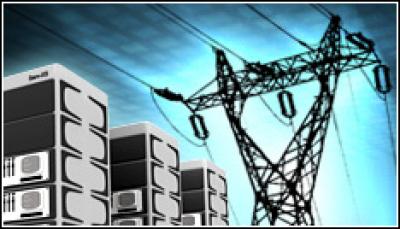Microsoft Research has published a paper suggesting that cloud computing servers should be distributed to homes where they can act as a “data furnace”, heating the building.
The paper proposes data furnaces (DFs) or “boilers” as they would be known in the UK, which would heat homes, and could save around £184 ($300) per server per year compared to a conventional data centre.
While some IT sites have already been built into systems which heat nearby buildings, such as Alchemy’s data centre in Shetland, the Microsoft paper proposes to break the IT kit into micro-data centres with around 40 to 400 CPUs, which could be the heat source for a family home.
Burning CPU cycles to heat a home
 “Data furnaces are managed remotely and do not require more physical maintenance than conventional furnaces,” say the paper’s authors, from Microsoft Research and the University of Virginia’s Computer Science Department.
“Data furnaces are managed remotely and do not require more physical maintenance than conventional furnaces,” say the paper’s authors, from Microsoft Research and the University of Virginia’s Computer Science Department.
The DF would use the home broadband network to hook up with the rest of the cloud, providing virtual machines for Internet-based services – while the house-owner would buy it just like a central heating boiler, and pay for the heat it produces.
Because the heat circulates in the house with no additional cooling costs, the DF could improve the PUE (power usage effectiveness) over a conventional data centre, the paper argues. Also, the DF provider gets revenue from the home-owner for use of the heat it provides.
“In 2006, the IT industry used 61 billion kWh or three percent of total energy consumption, in the US,” the authors claim. “Home heating alone consitutes six percent of the US energy usage. By piggy-backing on only half of this energy,” the paper continues, “the IT industry could double in size without increasing its carbon footprint or its load on the power grid and generation systems.”
A mid-size data centre burning hundreds of kW could be hosted inside an office building or apartment block, perhaps inside a data centre container, and used to heat the building, the paper suggests – with the added benefit that certain IT functions could be distributed nearer their point of use.
Recycling and seasonal cycles
The paper also suggests that the units could recycle older servers – as these are less thermally efficient, they would be better at heating buildings. Although some maintenance would be required, this can mostly be done remotely, the paper asserts, avoiding visits by engineers which would be more expensive in a very distributed system.
Based on nine percent of servers failing every 14 months, and it costing $100 to send someone to fix them, the data furnace could be managed with few visits, the report says: “Even if these occur three times per year, it is an amortized cost of less than ten dollars per server per year, and therefore does not substantially change the TCO [total cost of ownership] analysis.”
The paper suggests three different models: low-cost seasonal DFs (Type A) which only provide computing power when the weather is cold and the house heating is turned on, low-bandwidth neighbourhood DFs (Type B) which operate all year round, and eco-friendly urban DFs (Type C) which have a higher-speed uplink and operate all year round by using cooling.
To the obvious objection about the security of remote machines, the paper says: “Virtual machine encapsulation ensures [a] certain degree of isolation. Secure executions on untrusted devices are feasible. Sensor networks have make [made?] high physical security within reach.”
The paper’s authors are Jie Liu, Michel Goraczko, and Christian Belady of Microsoft Research; and Jiakang Lio and Kamin Whitehouse of the Computer Science Department at the University of Virginia.




